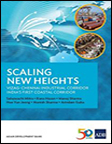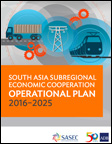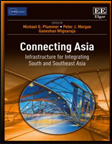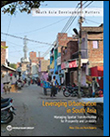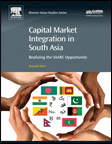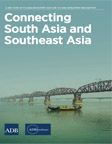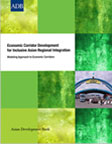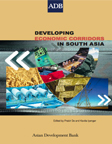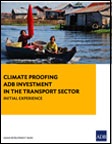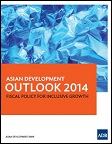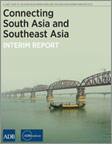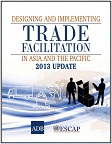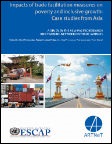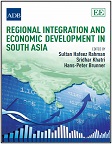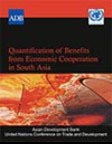Economic Corridor Development Results
Economic corridor development (ECD) involves the creation of an efficient multimodal transport network supported by quality infrastructure, logistics, and policy framework for ease of doing business, and distribution networks that link production centers, urban clusters, and international gateways, beyond the narrow space of a transport route. Individual SASEC countries are pursuing ECD to bring economic transformation and inclusive growth. SASEC support for economic corridors includes a regional approach in promoting synergies and identifying complementarities between national economic corridors and SASEC member countries, and improving cross-border links to optimize economic corridor investments.
ECD REGIONAL & INTERNATIONAL
PUBLICATIONS
total items: 16This book provides policymakers with a guide to understanding India’s economic corridor development strategy by examining its first coastal economic corridor, the East Coast Economic Corridor. It lays out the plan for its first phase, the Vizag–Chennai Industrial Corridor, which can help unify the country's domestic market, integrate its economy with Asia's global value chains, and support the 'Make in India' initiative to spur manufacturing through construction of world-class infrastructure supported by a major transport network, connecting urban clusters complemented by vibrant industrial zones, and encouraging a favorable and competitive environment for businesses to thrive, and facilitating efficient movement of goods and people. As a policy instrument and development strategy, economic corridors can help fast-track inclusive and sustainable economic growth, stimulate rapid industrialization and increase productivity, promote investments, and expand regional connectivity.
Source: Sabyasachi Mitra, Rana Hasan, Manoj Sharma, Hoe Yun Jeong, Manish Sharma, and Arindam Guha
The SASEC Operational Plan 2016–2025 embodies the strategic objectives and operational priorities of the SASEC Program for the next decade. It expands the SASEC Program's focus beyond intraregional cooperation to developing links with Southeast and East Asia, thus widening the scope of transport, trade facilitation, and energy cooperation. Economic and industrial corridor development, which will arise from improved connectivity, has been introduced as a priority initiative. SASEC 2025 is supported by a list of potential projects to be implemented in the subregion during 2016-2025, that will advance the SASEC goals of multi-modal connectivity, energy security and the growth of regional energy markets, and increased intra- and inter-regional trade. An update to the operational plan was published in 2020.
Source: Asian Development Bank
This book contains background papers prepared for the Asian Development Bank and the Asian Development Bank Institute joint study, 'Connecting South Asia and Southeast Asia.' It emphasizes the potential contribution to growth that greater connectivity—through better transport and energy infrastructure and improved soft infrastructure, including trade facilitation—between South Asia and Southeast Asia can foster. With benefits including greater participation in global supply chains for South Asia; lower trade costs; and increase in inter- and intraregional trade, the book underscores that, at a juncture where closer regional integration can secure sustainable and inclusive growth for economies in the two regions, specific policies should be examined and considered to enable both regions to maximize gains from greater integration.
Source: Michael G. Plummer, Peter J. Morgan, Ganeshan Wignaraja, eds.
As South Asian economies improve, they have the potential to greatly improve their prosperity and livability for the people of the region by improving their state of urbanization. Messy and hidden urbanization that leads to slums and sprawls is the result of failure to address congestion constraints arising from rapid growth of urban populations. This book examines the state of South Asia's urbanization – it reviews gaps in markets and policies that have hindered its proper growth, and discusses key policy areas that must be undertaken, including improvement in housing provisions, infrastructure, and basic services.
Source: Peter Ellis and Mark Roberts
This book discusses the potential capital market products and activities within South Asia that stakeholders in the region could explore to help the South Asian Association for Regional Cooperation (SAARC) region further realize its potential. Conventional investment, such as funds, global depository receipts, as well as promising opportunities that factor the region's demographics and socioeonomics are considered in this book, with arguments aimed toward investors and institutions. The book demonstrates both retail and institutional investor interest in this combined high-growth region by offering scope for yield, diversification and risk mitigation, maximized upside from multiple growth markets, minimized downside through low-correlation constituents, and makes the case why now is an opportune time to look at SAARC.
Source: Sourajit Aiyer
This book analyzes how closer regional connectivity and economic integration between South Asia and Southeast Asia can benefit both subregions. It aims to build a broad case for increased connectivity between the two regions and identify specific projects that have high potential to fulfill this objective. This joint study focuses on both “hard” infrastructure and associated “soft” infrastructure, including tariffs and non-tariff barriers, trade and transport facilitation, energy trading, and infrastructure investment and financing. It further provides a canvas for considering strategic cross-border infrastructure investments and policy reforms.
Source: Asian Development Bank Institute and Asian Development Bank
The experience of economic corridor development in different regions across continents is examined in this publication, which shares detailed models that assess the economic impact of corridor investments. The South Asia Subregional Economic Cooperation (SASEC) model highlights the regionally inequitable impact of corridor projects and focuses on the incremental effects of infrastructure investments in terms of gains in per capita income.
Source: Asian Development Bank
This book describes key conditions for transforming transport corridors into economic corridors and establishes the rationale for developing economic corridors, and the related benefits from production value chains along those corridors. It further emphasizes the significant potential of economic corridors in South Asia, particularly those being developed under the South Asia Subregional Economic Cooperation Program. The chapters highlight the impact of trade barriers on bilateral trade and present case studies on trade facilitation in South Asia. Countries in the subregion would benefit by working closely to exploit the full economic potential of economic corridors.
Source: Asian Development Bank
This publication reviews and documents experiences in transport investments and identifies opportunities to further mainstream climate risk management in transport investment projects. It also presents case studies where climate risk and vulnerability assessment were carried out and climate proofing measures have become an integral component of project design.
Source: Asian Development Bank
The Asian Development Outlook, ADB’s flagship economic publication provides comprehensive macroeconomic analysis in Asia including growth projections by country and region. The Asian Development Outlook 2014 forecasts that developing Asia will grow 6.2% in 2014 and 6.4% in 2015. South Asia remains one of the slowest growing subregions—although growth is forecast to improve by 5.3% in 2014 and 5.8% in 2015.
Source: Asian Development Bank
This joint ADB-ADBI study focuses on how improved physical connectivity (infrastructure) and associated institutional connectivity (software) can enhance more effective economic integration between the two subregions. The report reviews economic ties, identifies issues and constraints, and explores better connectivity and closer economic integration. It also examines major developments in South Asia-Southeast Asia trade and investment, economic cooperation, role of economic corridors, and regional cooperation initiatives.
Source: ADB and ADBI
This reference book was published to support the implementation of trade facilitation measures and reforms in Asia and the Pacific. It includes operational guidance on assessing the status of trade facilitation, the measures and reforms needed, how to design trade facilitation initiatives, and how to implement them at national and regional levels. The book is intended to assist policy makers, practitioners, and economists by bridging the gap between theory and practice. The revised 2013 version includes updated statistical figures and data, information on actual trade facilitation policies and practices, and the most recent research on trade facilitation.
Source: Asian Development Bank / United Nations Economic and Social Commission for Asia and the Pacific
This book addresses the gap between trade facilitation and poverty reduction and contains a compilation of specific case studies that explores the linkages between trade facilitation measures and poverty. It also presents cross-country analysis that examines inequality in low- and middle-income countries. Other chapters discuss economic corridors and microfinance development as trade facilitation measures and examine access to trade facilitation by export-oriented micro, small, and medium-sized enterprises. It also explores barriers to international entrepreneurship for the vegetable business in Bangladesh. Finally, it offers a comprehensive evaluation of the effectiveness of Export Processing Zones (EPZs) on poverty reduction.
Source: Ravi Ratnayake, Rajan Sudesh Ratna, Martina Francesca Ferracane and Yann Duval
South Asian leaders have made it a priority to tackle key regional issues such as poverty, environment degradation, trade and investment barriers and food insecurity, among others. This book considers the leadership of the South Asian Association for Regional Cooperation (SAARC) and the interaction with civil society in the process of South Asian regional cooperation and integration, and discusses how the emerging urgency in the provision of regional public goods provides an excellent opportunity to add to the successes in South Asian regional integration.
Source: Sultan Hafeez / Rahman Sridhar Khatri / Hans-Peter Brunner
The study summarizes important issues related to Asian regionalism. Viewing regional cooperation as a necessary tool for coping with the consequences of interdependence, the book discusses several pressing issues, such as integrating production, improving financial cooperation, and managing macroeconomic interdependence to create a stable architecture for an Asia-wide cooperation.
Source: Asian Development Bank
The study examines the implication of the South Asian Free Trade Agreement (SAFTA) on South Asian countries and on the region as a whole, employing both a quantitative and qualitative assessment on the outcomes of SAFTA. The research aims to provide support in the formulation of concrete policy measures for trade to ensure greater gains for the region, while at the same time mitigating potential negative impacts. Economic and social assessments through analytical tools and rational causal chain analysis further enrich the study.
Source: Asian Development Bank / United Nations Conference on Trade and Development

